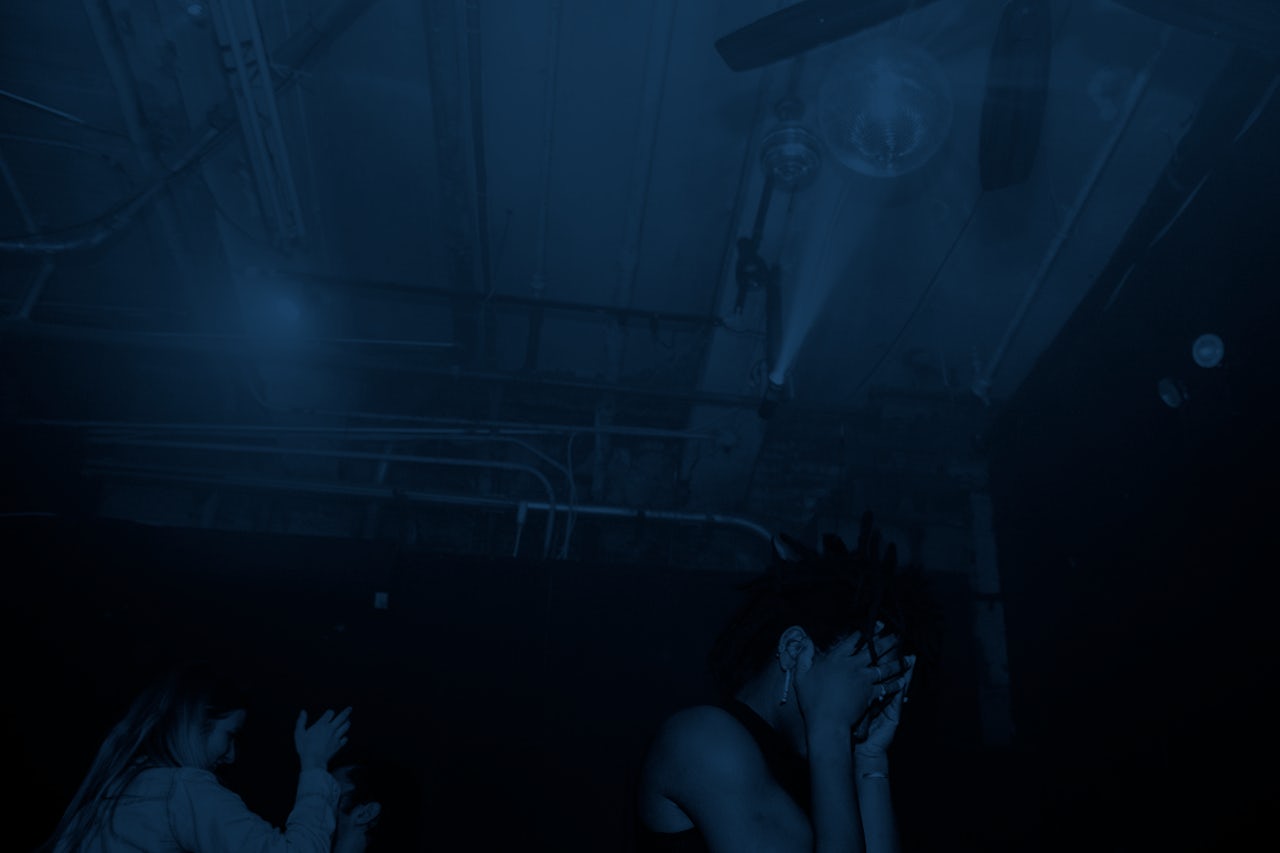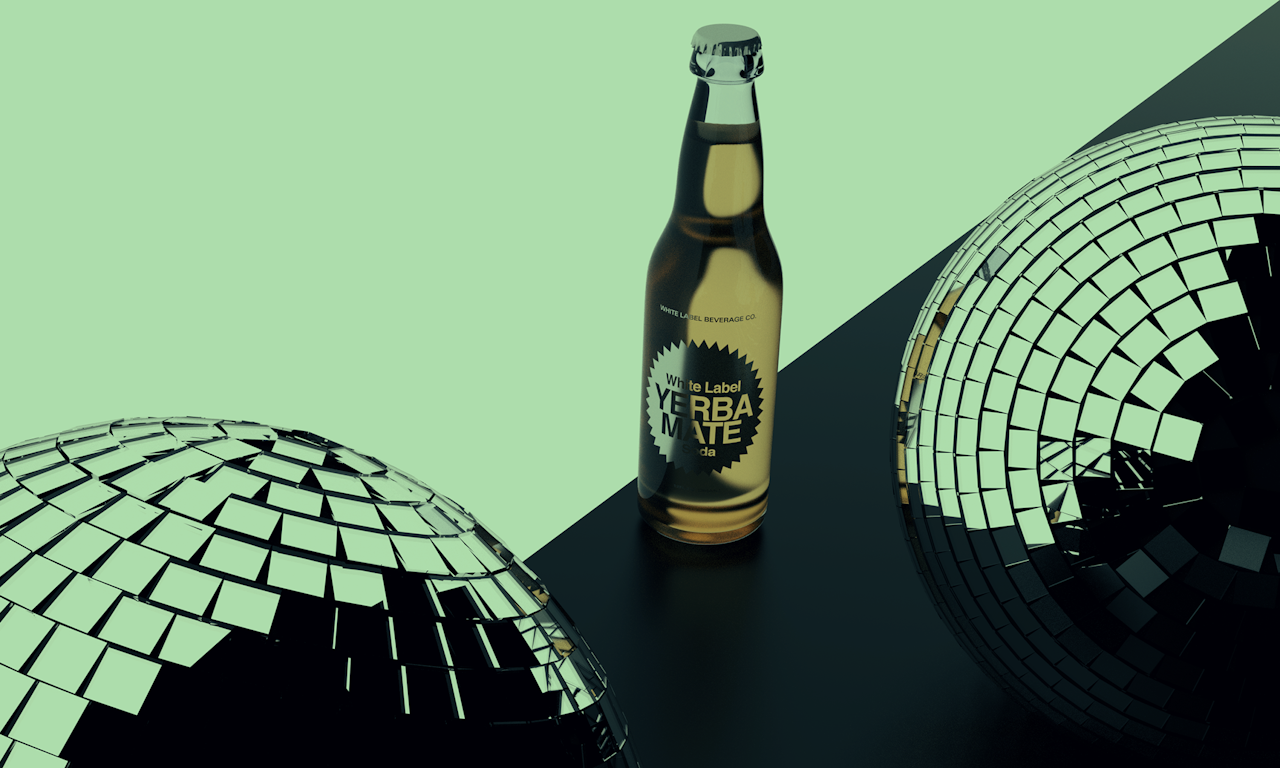I’ve been self-conscious for as long as I can remember. Growing up, I towered above the other kids, as if I was a teenager pretending to be in the third grade. I craved moments of anonymity. I figured out how to walk discreetly, slinking through school hallways to avoid bullies who took aim at the very large, very meek target that I was. Years later, in college, I discovered a better way to become invisible: the club. At any good party, blending into the background is easy. And in the world of dance music — specifically house and techno — smoke machines are a necessity. On dark and hazy dance floors, no one can see you. Nestled in the safety of inconspicuousness, people can feel free to be vulnerable. It’s not uncommon in bustling, exhausting cities like New York for people to seek good places to cry, but in the club, anywhere in the world, crying can come easily.
Last summer, on a trip through Europe, I found myself on one such dance floor — smokey, pitch black. When a DJ played a song that reminded me of my parents’ home of Nigeria, tears welled up in my eyes and I felt no shame. I might as well have been entirely alone, my body and mind softened by the syncopated rhythms of West African disco from a time before I was born.
A good club can be a safe space for spiritual exploration, which might in part explain the prevalence of MDMA. The drug sends a rush of serotonin to the brain, giving feelings of euphoria and of a profound connection to the world. Sometimes the effects can be overwhelming and, in a fit of sweat and teeth-gnashing, users will sit down, content with just existing. Other times, they might tap into something personal, like a deeply entrenched feeling they’ve long repressed. Those moments can bring tears of joy on a barely lit dance floor.
In the 1980s, during the oppressive tenure of Margaret Thatcher, British youth would gather in the thousands to dance at acid raves. One DJ, Danny Rampling, started throwing parties in a gym in South London, his take on the open-air clubs of Ibiza; he called it Shoom Club. The parties became a fixture in British youth culture, jump-starting an entire counterculture. The parties’ iconic symbol, a bright yellow smiley face, served as a testament to Shoom’s commitment to positivity. Of course, there was plenty of MDMA consumption, too. In Simon Reynolds’ book Energy Flash: Into the World of Techno and Rave Culture, a fellow British journalist recalls his first time at one of the parties. “I was sitting talking, and then this girl just appeared absolutely out of nowhere, plonked herself down on my knee, grabbed the corners of my mouth, and pulled them up into a smile. She said 'Be happy!' and then jumped off."
But even with the freedom of anonymity, the club isn’t always safe. A recent album by the producer Kingdom, aptly titled Tears in the Club, was inspired by the duality of nightlife: the security of joy, and its jagged edge. “[The club] is supposed to be a place to celebrate […] something that’s going to bring us together,” he said in an interview with Fact. “And then something goes terribly wrong and there’s blood.”
Sometimes, the search for euphoria and the cruel, careless greed of drug manufacturers intersect, causing clubgoers to overdose. In Toronto this past week, one woman died and several others were hospitalized from a bad batch of MDMA. Last year, in Orlando, a man went into a nightclub intent on a murderous rampage; he killed 49 people and wounded dozens more. For hundreds of people bringing in the new year at a nightclub in Istanbul, 2017 began with an attack that left 39 people dead. Vulnerability on the dance floor can be revelatory, or apocalyptic.
And yet vulnerability in the club isn’t always a spiritual affair. Sometimes it’s mundanely human. Crying is a common sight in nightclub bathrooms, where alcohol turns pain into tears. In her 2010 hit “Dancing On My Own,” Robyn describes the scenario of watching from the shadows as an ex falls in love with someone else — in a club. “I keep dancing on my own,” she sings, finding a club solution to a club problem.
New York’s Webster Hall is believed to be the first formal nightclub in the US, having operated as a concert and party venue since 1886. The 40,000 square foot space, located squarely in the center of the East Village, has stood as a cultural staple in the city for years, with multiple floors to cry on. Recently, it was announced that the massive events corporation AEG had partnered with the owners of the Barclays Center to purchase Webster Hall. Sometimes, it turns out, you’re crying for the club.















